Welcome to the A to Z of Bonsai.
We are compiling a worldwide A to Z of Bonsai database. The A to Z is written collaboratively by the people who use it and we would like to encourage anyone reading this page to contribute to what has become the worlds greatest encyclopedia of bonsai terms. Entries when they are made will be added to an editable list which will be checked prior to publication. Photos and images of the bonsai term can be added and links made to relevant web pages.
|
 - 31 entries - 31 entries |
|
 |
|
|
   |

|
Earth LAYERING - This PROPOGATION technique involves removing a small section of BARK from a low growing branch and anchoring it to the ground so that ROOTS will sprout from the exposed area.
When this happens the branch can be cut away from the main tree and allowed to grow as an independent plant.
This is the propogation "MEthod of choice" for sprawling plants like low rhododendron and creeping juniper.
|
| Thanks to - Wikipedia for use of the image |
|
 |
|
|
  |
(No Photo Yet)
(Send Image) |
ECTOPARASITIC EELWORM - See entry for : "EELWORMS"
|
|
 |
|
|
  |
(No Photo Yet)
(Send Image) |
EDA>EDA - Japanese term for branches
|
|
 |
|
|
  |
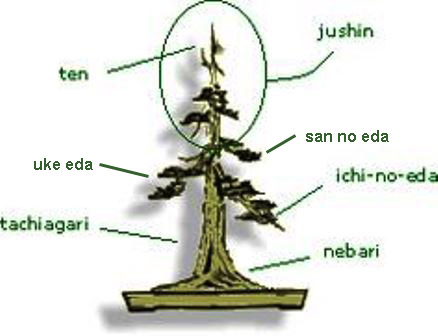
|
EDA>EDABONE>EDA BONE - The overal BRANCH STRUCTURE or skeleton of a tree. See related terms describing the position of individual branches : MAE EDA, USHIRO EDA, UKE EDA, KUITSUKI EDA and sashi eda .
|
|
 |
|
|
  |
(No Photo Yet)
(Send Image) |
EDA>EDANUKI>EDA NUKI - Japanese term for the process of removing unwanted branches.
|
|
 |
|
|
  |
(No Photo Yet)
(Send Image) |
EDA>EDATANYA>EDA TANYA - Japanese term describing a ramified branch forming a FOLIAGE PAD.
|
|
 |
|
|
  |
(No Photo Yet)
(Send Image) |
EDA>EDAUCHI>EDA UCHI - The hamonising effect of BRANCH STRUCTURE.
|
|
 |
|
|
  |
(No Photo Yet)
(Send Image) |
EDA>EDAWARI>EDA WARI - Japanese term for a tree exhibiting several branches/FOLIAGE PADs (see "EDA TANYA")
|
|
 |
|
|
  |
(No Photo Yet)
(Send Image) |
EDA>EDA ZAshi - Japanese term for the the process of removing unwanted branches.
|
|
 |
|
|
  |
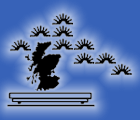
|
BONSAI>BONSAI>BONSAIGROUP>EDINBURGH BONSAI GROUP - Edinburgh -
Currie Scout Hall,
Lanark Road,
Currie, EH14 5JX
Convenor - Janice Tel No - 01620 825187.
MEetings - First Wednesday of the month 8pm . Member of SCOTTISH BONSAI ASSOCIATION (SBA).
|
|
 |
|
|
  |
(No Photo Yet)
(Send Image) |
EELWORMS - These are worms which inhibit growth by attacking plant ROOTS.
There are several types : CYST EELWORMs : which pierce the roots creating GALLS which protect them. ECTOPARASITIC EELWORMs : these may carry viral deseases resulting in yellowing of foliage from the base up. Root-lesion eeelworms : these build nests which cause CANKER in the roots causing yellowing of foliage and possible fungal developMEnt.
Treatment requires removal of yellowing LEAVES and spraying of remaining foliage with a PARATHION based wash, plus mixing NEMATICIDES with the soil which should be prevented from excess wetness.
|
|
 |
|
|
   |
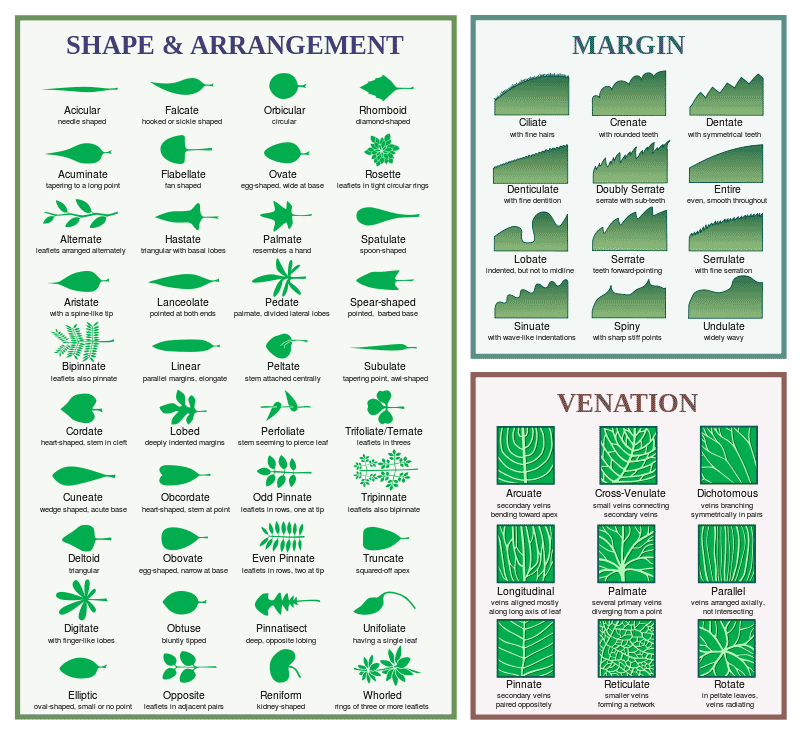
|
ELLIPTIC (LEAF) - Oval (almond) SHAPEd
|
| Thanks to - Wikipedia for use of the image |
|
 |
|
|
  |
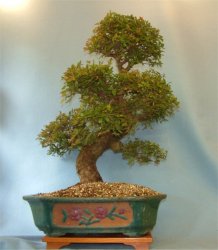
|
ELM - CHINESE (ULMUS PARVIFLORA) - Small, round tree with a VARIETY of BARK types ranging from smooth, grey to cork bark, both bearing small, dark green, glossy LEAVES with serrated edges.
ClaiMEd to be the most popular /best for BONSAI>BONSAI>BONSAI. May be grown indoors, when they will not drop leaves in winter, or outdoors, when they will drop leaves.
STYLE : Suitable for all styles but delicate twigs and stout, long, flexible ROOTS make it especially suited to broom and root-over-rock styles.
WARNING : INSECTICIDE>SYSTEMIC INSECTICIDE s and FUNGICIDEs cause DEFOLIATION in Chinese elms. Fleshy roots need some protection from frost.
|
| Thanks to - British Bonsai for use of the image |
|
 |
|
|
  |
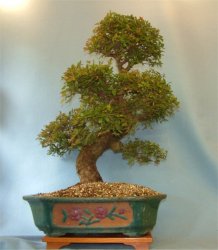
|
ELM - CHINESE (ULMUS PARVIFLORA) - Small, round tree with a VARIETY of BARK types ranging from smooth, grey to cork bark, both bearing small, dark green, glossy LEAVES with serrated edges.
ClaiMEd to be the most popular /best for BONSAI>BONSAI>BONSAI. May be grown indoors, when they will not drop leaves in winter, or outdoors, when they will drop leaves.
STYLE : Suitable for all styles but delicate twigs and stout, long, flexible ROOTS make it especially suited to broom and root-over-rock styles.
WARNING : INSECTICIDE>SYSTEMIC INSECTICIDE s and FUNGICIDEs cause DEFOLIATION in Chinese elms. Fleshy roots need some protection from frost.
|
| Thanks to - British Bonsai for use of the image |
|
 |
|
|
  |
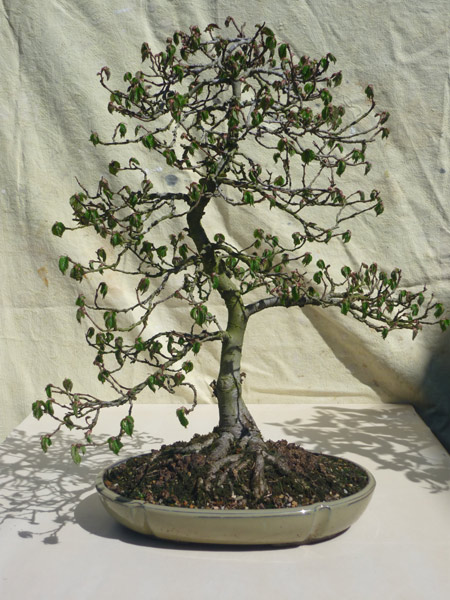
|
ELM - ENGLISH (ULMUS PROCERA) - Small, round tree with fissured, grey-brown BARK bearing dark green, glossy LEAVES with serrated edges which are soMEhwhat larger than the Chinese elm. Foliage turns bright yellow in autumn.
STYLE : Suitable for all styles but delicate twigs and stout, long, flexible ROOTS make it especially suited to broom and root-over-rock styles.
WARNING : INSECTICIDE>SYSTEMIC INSECTICIDE s and FUNGICIDEs cause DEFOLIATION in Elms. Fleshy roots need some protection from frost
|
| Thanks to - Joe Bailey, Ayr for use of the image |
|
 |
|
|
  |
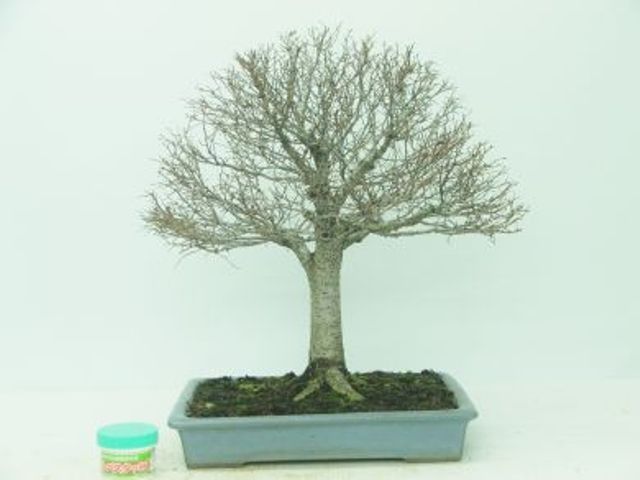
|
ELM - JAPANESE (ZELKOVA SERRATA) - Strong growing DECIDUOUSTREE>DECIDUOUS TREE with long erect branches growing from a short straight trunk. In winter the ELONGATED, serrated edged, LEAVES turn from deep green to crimson/bronze, orange/yellow.
STYLE : Suitable for all styles but especially suited to broom and group styles (especially if trunks are not straight enough for broom).
WARNING : Keep the structure light and airy as congestion of fine twigs can cause dieback - soMEtimes of whole branch.
|
| Thanks to - Wattston Bonsai for use of the image |
|
 |
|
|
  |
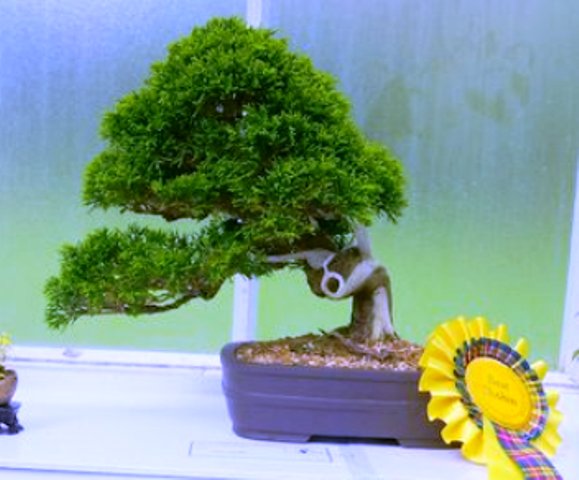
|
ELONGATED - Japanese term : GoZA Kake.
Distinguishing feature of this style is an exaggeratedly long number one branch.
This style is often placed over water in Japanese gardens
|
| Thanks to - SBA Gallery for use of the image |
|
 |
|
|
   |
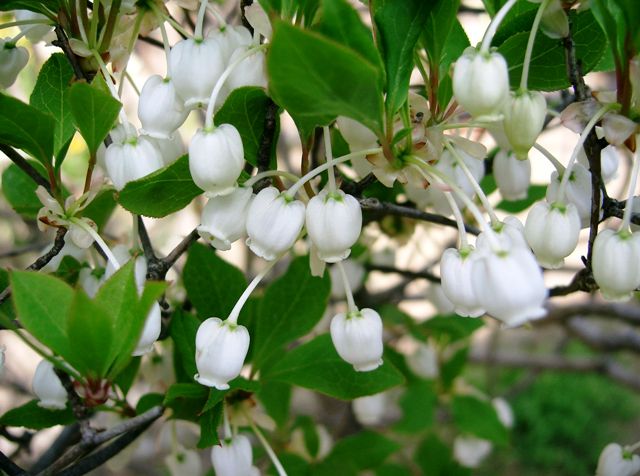
|
ENKIANTHUS (ENKIANTHUS) - Native to East Asia and Himalayas.
There are 2 main varieties :
Campanulatus : Upright form with red branches and eliptical, ACUTE, dentate LEAVES which are green on top and red underneath.
Perrulatus : Eliptical, acute, oval leaves which are bright green on top and with long veins underneath. They bear hanging, white, FLOWERS>UMBELLATE FLOWERS in April/May before leaves form.
STYLE : Suitable for most styles with exception of formal upright, cascade, broom.
WARNING : Do not spray the tree when in flower.
|
| Thanks to - Wikipedia for use of the image |
|
 |
Enoki
|
- (Tree Type (Outdoors))
|
|
   |
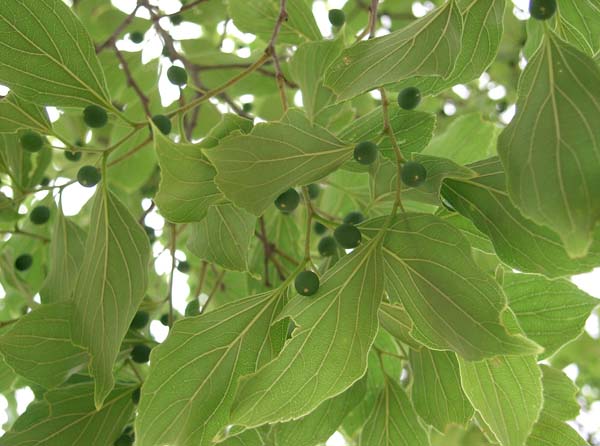
|
ENOKI - Western naME HackBERRY (Celtis) or CHINESE HACKBERRY (CELTIS SINENSIS). This is a small DECIDUOUSTREE>DECIDUOUS TREE bearing shiny oval LEAVES and small bright orange FRUITs, which can be grown as indoor or outdoor tree.
STYLE : Well structured branches and a fine tracey of twigs make this ideal for broom style.
WARNING : Must have a DORMANTPERIOD>DORMANT PERIOD during winter or will die before spring. If kept indoors then move to a sheltered outdoor position for winter.
|
| Thanks to - Wikipedia for use of the image |
|
 |
|
|
  |
(No Photo Yet)
(Send Image) |
ENTIRE (LEAF) - Describes the margin of a leaf which is entirely smooth.
|
|
 |
|
|
  |
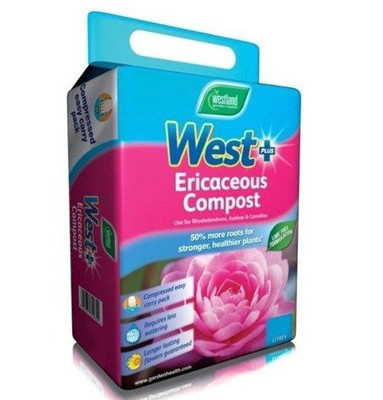
|
COMPOST>ERICACEOUS COMPOST - Growing MEdium for lime hating plants such as AZAlea, Rhododendron and Camelia
|
| Thanks to - Westland for use of the image |
|
 |
|
|
  |
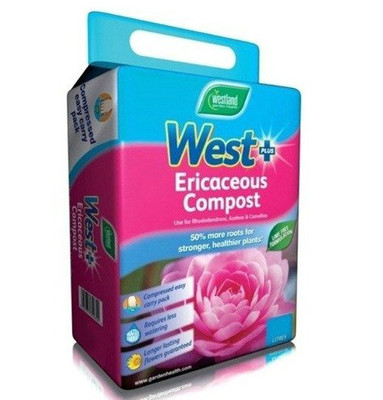
|
ERICACEOUS FERTILIZER - Fertilizer suitable for liME hating plants.
|
| Thanks to - Westland for use of the image |
|
 |
|
|
   |
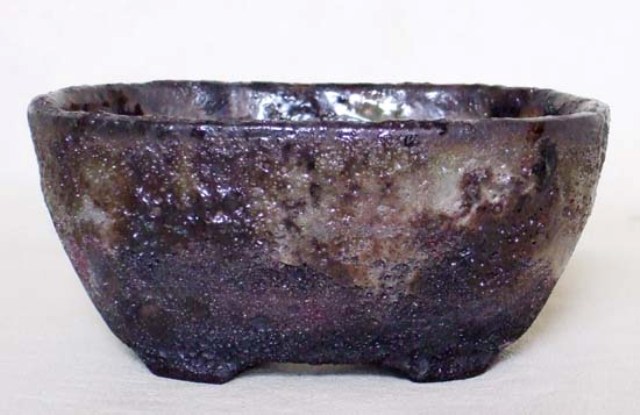
|
BONSAI>BONSAI>BONSAI>ERIN BONSAI - Erin Bonsai specialises in high quality hand-made Bonsai and ACCENT POTs made for bonsai enthusiasts by Vic & Glyn Harris, a father & son team who have been selling BONSAI POTs professionally for over 12 years.
All pots are hand-made by us and are individually glazed, so that every pot is unique.
Mr Victor Harris,
41 Savoy Road Bristol,
BS4 3SZ,
UK
E-mail : mail@erinbonsai.com
|
| Thanks to - Erin Bonsai web site for use of the image |
|
 |
|
|
   |

|
ESCALLONIA (ESCALONIA) - A shrub with small, glossy, green LEAVES and small pink and white FLOWERS.
STYLE : best suited to informal upright, slanting, cascade, semi-cascade, twin trunk, CLUMP and group styles.
WARNING : DEADWOOD prone to rotting. Treat with wood hardener..
Picture courtesy of Peter Thorne, Ayr BONSAI>BONSAI>BONSAI Group.
|
| Thanks to - Peter Thorne, Ayr for use of the image |
|
 |
|
|
   |

|
BONSAI>BONSAI>BONSAI>ESPRIT BONSAI - Esprit Bonsaï is a bonsai magazine which was founded: to speak of bonsai, but also to look at other related arts such as pots, companion plants, ikebana … and all in relation to the people, the artists who SHAPE them and who, through their work, express their own sensibilities and their respect of and love for nature and the world around them. A philosophy and a vision of the ART OF BONSAI that it wishes to share with the bonsai fraternity..
|
| Thanks to - Esprit Bonsai Magazine for use of the image |
|
 |
|
|
  |
(No Photo Yet)
(Send Image) |
ETIOLATE - Describes long, thin, pallid growths which result from a lack of light. SHOOTS arising from the centres of dense trees or below soil level frequently becoME etiolate. They usually contain a large amount of water and are brittle and difficult to SHAPE by WIRING.
|
|
 |
|
|
   |
(No Photo Yet)
(Send Image) |
EUROPEAN LARCH - LARIX DECIDUAor the European larch, is distinguishable by its pale, straw-like coloured twigs from the JAPANESE LARCH's red/orange new twigs which darken to almost purple in winter.
See LARCH (LARIX) for details
|
|
 |
|
|
  |
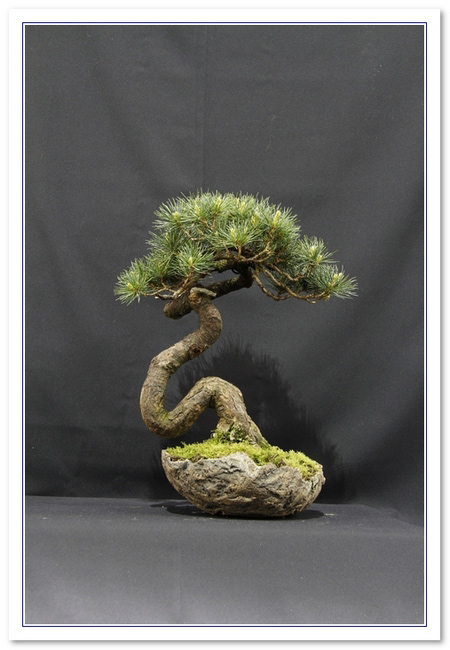
|
EVERGREEN - A tree that retains its LEAVES throughout the year.
|
|
 |
|
|
  |
(No Photo Yet)
(Send Image) |
EXFOLIATE - To peel away in strips as in the BARK of trees such as eucalyptus or paper bark maples.
|
|
 |
|
|
  |
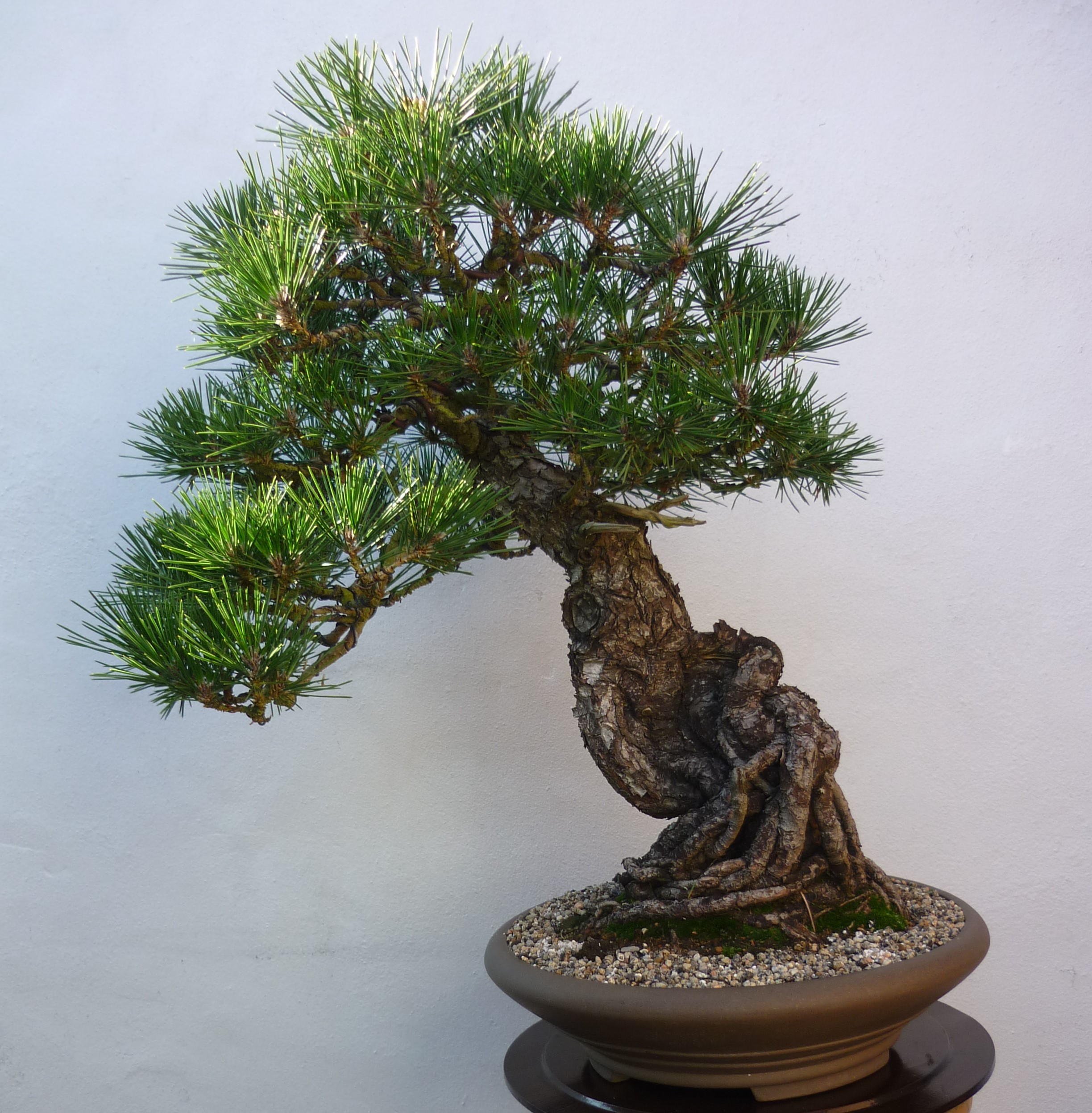
|
EXPOSED ROOT STYLE - With exposed ROOTS and air space under roots suggesting erosion. In Japanese : NEAGARI.
|
|
 |
|
|
   |
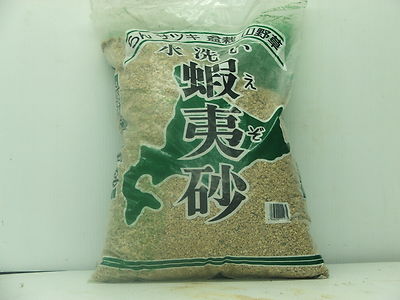
|
Ezo GRIT - A Japanese volcanic PUMICE with a very attractive buff colour.
Good moisture-holding capacity and frost proof so, long lived. Low C.E.C. Moderately heavy and very expensive due to transport and import costs. European produced pumice is every bit as good and much cheaper.
Taken from Kaizen BONSAI>BONSAI>BONSAI - see weblink for full advice on growing MEdiums.
|
| Thanks to - Kaizen Bonsai for use of the image |
|